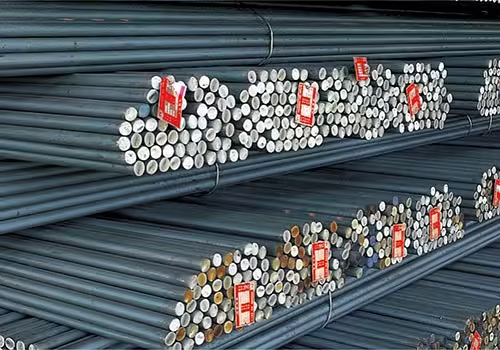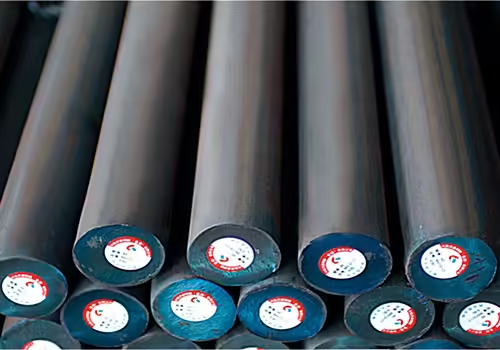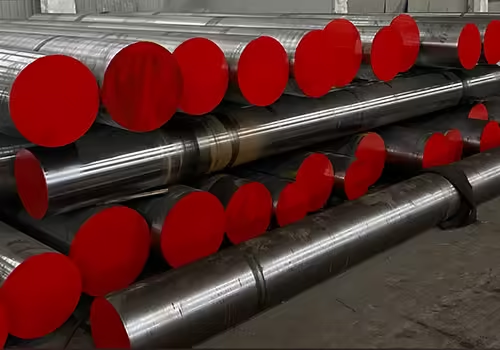
10 Facts Before Buying 1020 Steel Rod for Your Project
Table of Contents
Introduction


When it comes to selecting the right material for your construction or manufacturing project, the 1020 steel rod stands out as a popular choice. Known for its versatility, strength, and affordability, this material is widely used across various industries. However, before making a purchase, it’s essential to understand its properties, applications, and potential limitations. In this blog, we’ll explore ten critical facts about the 1020 steel rod to help you make an informed decision.
What is a 1020 Steel Rod?
The 1020 steel rod is a widely used low-carbon steel alloy that contains approximately 0.20% carbon. This specific carbon content places it in the category of mild steels, which are known for their balance of strength, ductility, and ease of fabrication. The relatively low carbon percentage in the 1020 steel rod makes it highly machinable, weldable, and formable, while still providing sufficient strength for a variety of applications.
This material is a popular choice across multiple industries, including construction, automotive, and machinery manufacturing. Its versatility and cost-effectiveness make it a go-to option for projects that require reliable performance without the need for the extreme strength or hardness offered by high-carbon steels.
Key Properties
Understanding the properties of the 1020 steel rod is essential to determining its suitability for your project. These properties not only define its performance but also influence how it can be used in different applications. Here are some of its standout characteristics:
- Machinability:One of the most significant advantages of the 1020 steel rod is its excellent machinability. The low carbon content allows for smooth cutting, drilling, and shaping, making it ideal for intricate designs and precision components. This property is particularly beneficial in industries like manufacturing and tooling, where complex parts are often required.
- Weldability:The 1020 steel rod is highly weldable, meaning it can be joined with other materials or itself without significant risk of cracking or weakening. This makes it a preferred choice for fabrication projects that involve welding, such as the construction of frames, supports, or custom machinery parts.
- Ductility:Ductility refers to a material’s ability to deform under stress without breaking. The 1020 steel rod exhibits excellent ductility, allowing it to be bent, stretched, or shaped into various forms without losing its structural integrity. This property is particularly useful in applications that require flexibility or custom shapes, such as automotive components or architectural elements.
- Strength: While the 1020 steel rod is not as strong as high-carbon steels or alloy steels, it still provides adequate strength for many structural and mechanical applications. Its tensile strength of around 420 MPa makes it suitable for use in components that need to withstand moderate stress, such as shafts, pins, and brackets.
- Cost-Effectiveness :Another notable property of the 1020 steel rod is its affordability. Compared to high-carbon or alloy steels, it is more cost-effective, making it an attractive option for projects with budget constraints. Its combination of performance and price makes it a practical choice for both large-scale industrial applications and smaller, custom projects.
- Corrosion Resistance :While the 1020 steel rod is not inherently corrosion-resistant like stainless steel, it can be treated with coatings or finishes to enhance its durability in environments where rust or oxidation might be a concern. This adaptability increases its usability in a wider range of applications.
Applications

The 1020 steel rod’s unique combination of properties makes it suitable for a variety of applications across different industries. Some of the most common uses include:
- Construction: Used in structural components such as beams, frames, and supports.
- Automotive: Ideal for manufacturing parts like axles, gears, and shafts.
- Machinery: Frequently used in the production of machine components that require precision and durability.
- General Fabrication: Suitable for creating custom tools, brackets, and other parts.
- Agriculture: Used in equipment such as plows, harrows, and other machinery.
Advantages
The 1020 steel rod offers several benefits that make it a preferred choice for many projects:
- Cost-Effective: Its low carbon content makes it more affordable than high-carbon steels.
- Ease of Use: Its machinability and weldability simplify the fabrication process.
- Versatility: It can be used in a wide range of applications across different industries.
- Availability: The 1020 steel rod is readily available in various sizes and shapes.
Disadvantages
While the 1020 steel rod has many advantages, it’s also important to consider its limitations:
- Lower Strength: Compared to high-carbon steels, it may not be suitable for high-stress applications.
- Limited Hardness: It cannot be hardened to the same extent as other steel alloys.
- Corrosion Susceptibility: Without proper treatment, it may be prone to rust and corrosion.
Comparison with Other Steel Alloys
| Property | 1020 Steel Rod | 1045 Steel Rod | 4140 Steel Rod |
|---|---|---|---|
| Carbon Content | 0.20% | 0.45% | 0.40% |
| Tensile Strength | 420 MPa | 620 MPa | 655 MPa |
| Machinability | Excellent | Good | Fair |
| Weldability | Excellent | Good | Fair |
| Cost | Low | Moderate | High |
This table highlights the differences between the 1020 steel rod and other commonly used steel alloys, helping you choose the right material for your needs.
How to Choose the Right 1020 Steel Rod for Your Project

Selecting the appropriate material for your project is a critical step in ensuring its success. When considering a low-carbon steel option, there are several factors to evaluate to determine if it meets your specific requirements. Here’s a detailed guide to help you make the right choice:
- Size and Shape: The dimensions of the material must align with your project’s specifications. Whether you need round, square, or hexagonal rods, ensure the diameter, length, and thickness are suitable for your application. Custom sizing may also be available depending on the supplier.
- Surface Finish: The finish of the material can impact its performance and appearance. Common options include:
- Hot-Rolled: This finish is cost-effective and suitable for applications where surface smoothness is not a priority.
- Cold-Rolled: Offers a smoother surface and tighter tolerances, making it ideal for precision components.
- Polished: Provides a refined, shiny appearance, often used in decorative or aesthetic applications.
- Grade: Ensure the material meets the required industry standards and certifications. This guarantees that it has been tested for quality and consistency. For example, verify that it complies with ASTM or ISO standards, depending on your region and industry.
- Supplier Reputation: Purchasing from a reputable supplier is essential to ensure you receive high-quality material. Look for suppliers with positive reviews, certifications, and a history of delivering reliable products. A trusted supplier can also provide technical support and guidance to help you choose the best option for your needs.
Maintenance and Care for 1020 Steel Rod
To maximize the lifespan and performance of your material, proper maintenance is crucial. Here are some essential tips to keep it in optimal condition:
- Regular Cleaning: Dirt, debris, and moisture can accelerate corrosion and wear. Clean the surface regularly using appropriate methods, such as wiping with a cloth or using a mild detergent. This is especially important for materials used in outdoor or industrial environments.
- Protective Coatings: Applying coatings can significantly enhance durability and resistance to environmental factors. Common options include:
- Paint: Provides a protective layer and can be customized to match aesthetic requirements.
- Oil: Acts as a barrier against moisture, preventing rust and corrosion.
- Galvanization: A process that coats the material with zinc, offering long-term protection against harsh conditions.
- Proper Storage: Store the material in a dry, temperature-controlled environment to prevent exposure to moisture and extreme temperatures. Use racks or pallets to keep it off the ground and reduce the risk of damage.
- Inspection and Maintenance Schedule :Regularly inspect the material for signs of wear, corrosion, or damage. Address any issues promptly to prevent further deterioration. Implementing a maintenance schedule can help you stay proactive and extend the lifespan of the material.
Conclusion
The 1020 steel rod is a versatile and cost-effective material that suits a wide range of applications. Its machinability, weldability, and ductility make it a popular choice in various industries. However, it’s essential to weigh its advantages against its limitations, such as lower strength and susceptibility to corrosion. By understanding these ten critical facts, you can make an informed decision and ensure the success of your project. Whether you’re working on construction, automotive, or machinery projects, the 1020 steel rod is a reliable option worth considering.
FAQ
What is the difference between 1020 and 1045 steel rods?
The primary difference lies in their carbon content. The 1020 steel rod contains 0.20% carbon, while the 1045 steel rod has 0.45%, making the latter stronger but less ductile.
Can 1020 steel rod be heat-treated?
While it can be heat-treated to some extent, it cannot achieve the same level of hardness as high-carbon steels.
Is 1020 steel rod suitable for outdoor use?
Without protective coatings, it may be susceptible to corrosion. Proper treatment is essential for outdoor applications.
What industries commonly use 1020 steel rod?
It is widely used in construction, automotive, machinery, and general fabrication industries.
How does 1020 steel rod compare to stainless steel?
Stainless steel offers better corrosion resistance but is more expensive and less machinable than 1020 steel rod.






